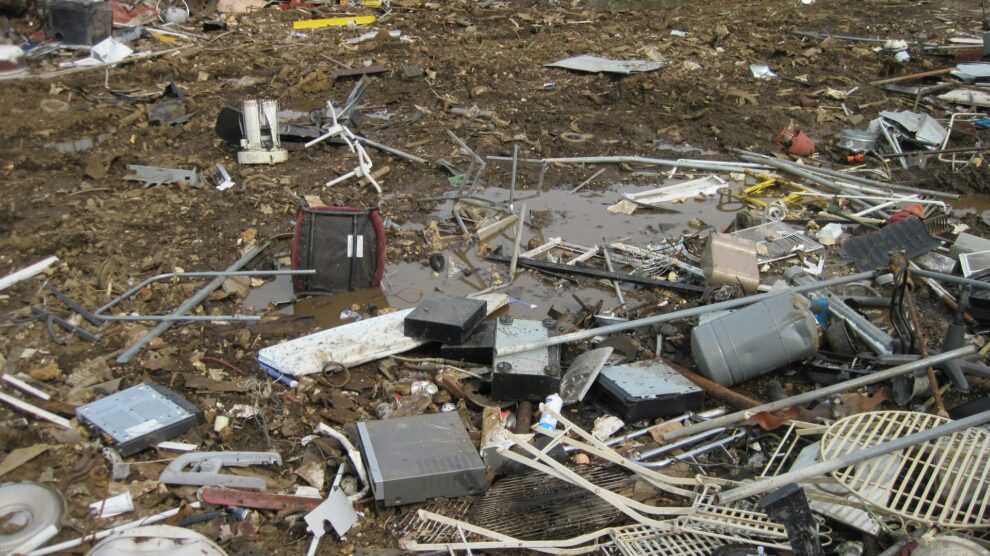In today’s age of rapid technological advancement and innovation, a greater number of electronic goods, which comprises computers, televisions, laptops, tablets, refrigerators, cell phones, fax machines, batteries, DVD sets, vacuum cleaners, microwave ovens, electric lamps, etc. are being discarded, leading to increased electronic or e-waste volumes globally. This e-waste has emerged as a new threat to human health and the environment due to the presence of toxic chemicals in them. They are a major concern in developing countries which have a rapidly growing population and weak public healthcare infrastructures. If they are not disposed of properly, then they can leach lead and other chemicals into soil and groundwater. Many of the products can be reused, refurbished, or recycled in a proper way so that they do not cause any harm to the ecosystem. Here are some ways of how you can dispose of e-waste:
Donate – Old electronics that you don’t need anymore may be useful to others. You can donate electronic items to a local thrift store if they are in working condition. There are many organizations that accept such goods. There are also numerous charities that accept old electronic products. In some countries, items such as computers and phones are sent to classrooms so that they can be used for learning.
Resale – One man’s trash is another man’s treasure as the old saying goes. This concept can be used to dispose of your old electronics. Reselling is one of the most common and profitable ways to dispose of e-waste. You can search for electronic stores that take electronics and then sell your goods there. You can also sell your products at electronic and mechanical workshops.
Recycle – Another option is to recycle the used goods. Products such as cell phones, laptops, cables, drives, monitors, and more can be given to a recycling center to be reused. You need to look or search online for a retailer or company that offers to recycle for free. The recycling process involves dismantling the devices and separating the hazardous parts from the precious metals such as copper and lead.
Recent Developments in E-Waste Management
The growing menace of e-waste has drawn the attention of industries, NGOs, and the government worldwide. Recently, seven UN entities, supported by the World Economic Forum and the World Business Council for Sustainable Development (WBCSD), collaborated to address the issue of e-waste by restructuring the current electronics system to reduce e wastes each year. The entities which partnered include some major multinationals, small and medium-sized enterprises (SMEs), trade unions, academia, civil societies, and associations.
Mediro Foundation, a South Africa-based organization that offers free education and training in healthcare, came up with an e-waste management program with the aim of creating employment for young people who were tasked with cleaning up garages and storerooms within the community that had old electronic products such as computers, TVs, fax machines, copiers, cell phones, etc., and in the process raise funds for the foundation.
Cerebra Integrated Tech, a computer manufacturing company in India, established one of the largest e-waste recycling facilities in the country. Having a capacity of 96,000 metric tons per annum, the new setup is completely automated and causes no pollution. The wastes are grounded and important metals such as gold, silver, platinum, palladium, copper, steel, iron, and aluminum are drawn out.
Electronic Recyclers International (ERI) adopted Basel Action Network’s new EarthEye electronic waste tracking system. EarthEye offers a performance audit every 24 hours and helps companies to identify any fraud or contractual violations. The platform works via the deployment of trackers that allow businesses and governments to track the location of their e-waste at any given time. It provides real-time logistics monitoring of data security breaches due to mining of e-waste by criminals to recover business data from discarded electronics and illegal exports to substandard recycling operations in developing countries.
A Look at the E-Waste Management Market
The market for e-waste management is witnessing rapid growth. Driving that growth are factors such as the shrinking life span of electronic devices, the scarcity of sources of precious metals, and the high rate of obsolescence. However, the high cost of e-waste management, few e-waste collection zones, and low awareness of the effects of e-waste in developed regions restrain the industry’s growth. On the other hand, several initiatives taken by electronic manufacturers have created opportunities for the growth of the e-waste industry. According to a report by Allied Market Research, the global e-waste management market is expected to garner $49.4 billion by 2020, registering a CAGR of 23.5% during the forecast period, 2014 – 2020. Some of the major players operating in the market include Stena Metall AB, Enviro-Hub Holdings Ltd., Boliden AB, SIMS Metal Management Limited, MBA Polymers Inc., Triple M Metal LP, LifeSpan Technology Recycling Inc., CRT Recycling Inc., Tetronics Limited, and Electronic Recyclers International, Inc.





